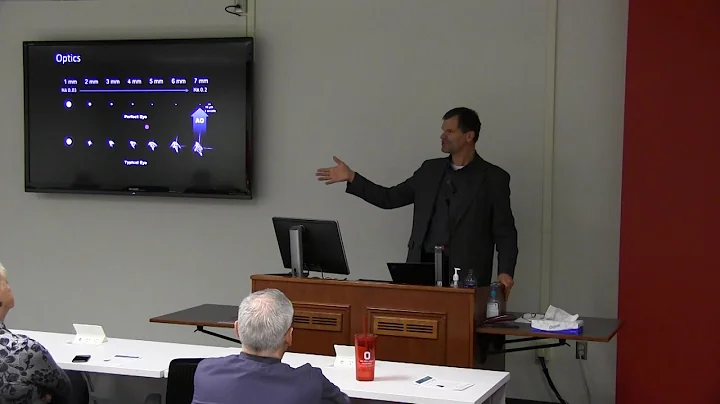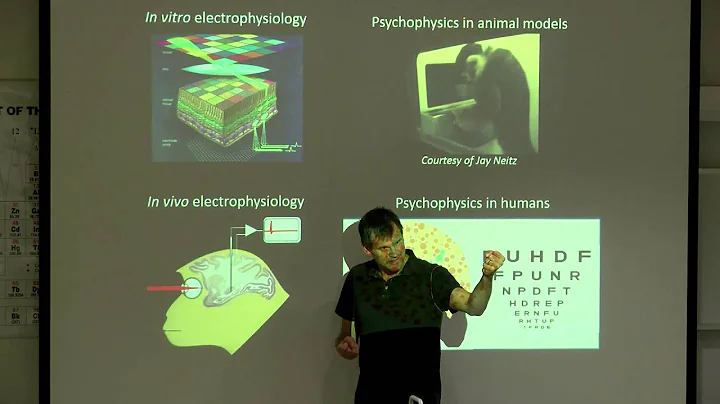Austin John Roorda
age ~58
from Houston, TX
- Also known as:
-
- Austin J Roorda
- Phone and address:
- 4418 Leeland St, Houston, TX 77023
Austin Roorda Phones & Addresses
- 4418 Leeland St, Houston, TX 77023
- 4310 Roseland St, Houston, TX 77006
- Long Barn, CA
- 840 Sea View Dr, El Cerrito, CA 94530 • (281)4139551
- 3001 Derby St, Berkeley, CA 94705
- 112 Meigs St, Rochester, NY 14607
Us Patents
-
Method And Apparatus For Using Adaptive Optics In A Scanning Laser Ophthalmoscope
view source -
US Patent:7118216, Oct 10, 2006
-
Filed:May 10, 2005
-
Appl. No.:11/125331
-
Inventors:Austin Roorda - Houston TX, US
-
Assignee:University of Rochester - Rochester NY
-
International Classification:A61B 3/00
A61B 3/10
G02B 26/08 -
US Classification:351205, 351221, 351246, 359202
-
Abstract:A scanning laser ophthalmoscope incorporates adaptive optics to compensate for wavefront aberrations in the eye. Light from a light source is scanned onto the retina. Light reflected from the retina is detected for imaging and is also used for wavefront sensing. The sensed wavefront aberrations are used to control an adaptive optic device, such as a deformable mirror, disposed in the path of the light from the source in order to compensate for the aberrations.
-
Method And Apparatus For Using Adaptive Optics In A Scanning Laser Ophthalmoscope
view source -
US Patent:20030053026, Mar 20, 2003
-
Filed:Aug 30, 2002
-
Appl. No.:10/231491
-
Inventors:Austin Roorda - Houston TX, US
-
Assignee:University of Rochester - Rochester NY
-
International Classification:A61B003/14
-
US Classification:351/206000
-
Abstract:A scanning laser ophthalmoscope incorporates adaptive optics to compensate for wavefront aberrations in the eye. Light from a light source is scanned onto the retina. Light reflected from the retina is detected for imaging and is also used for wavefront sensing. The sensed wavefront aberrations are used to control an adaptive optic device, such as a deformable mirror, disposed in the path of the light from the source in order to compensate for the aberrations.
-
Retinal Stimulator
view source -
US Patent:20210236845, Aug 5, 2021
-
Filed:Apr 20, 2021
-
Appl. No.:17/235627
-
Inventors:- Oakland CA, US
Austin Roorda - Berkeley CA, US
Brian Schmidt - Berkeley CA, US
Utkarsh Singhal - Berkeley CA, US -
International Classification:A61N 5/06
G06T 7/00 -
Abstract:According to various embodiments of the invention, systems and methods for stimulating the retina are presented, by a combination of some or all of the following: imaging and mapping the retina; determining or assigning parameters on the retinal map, including real and virtual cell types and properties; tracking the head and/or eye; receiving or creating, transforming and/or projecting desired image signal onto the retinal map; combining the desired image with retinal parameter map data in order to determine per-cell or per-retinal-location stimulus values; and delivering the desired stimulus values to the retina. According to various embodiments of the invention, improved or novel color display, vision and perception are achieved: color gamut that encompasses the full human gamut; gamut that goes beyond the full human gamut; providing trichromatic vision functionality and/or color perception to dichromats, monochromats and/or individuals with anomalous color vision; providing perception of N-dimensional color, where N is higher than 3.
Googleplus

Austin Roorda
Youtube
Get Report for Austin John Roorda from Houston, TX, age ~58





